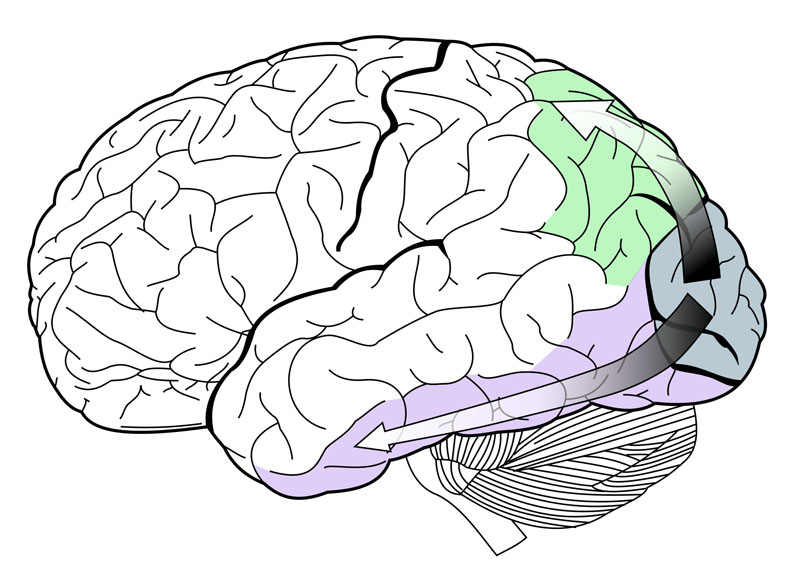The Stages of Memory - Encoding
- Controlled processing describes cognitive processing requiring us to pay attention and deliberately put in effort.
- Automatic processing is cognitive processing that occurs without conscious awareness or expenditure of effort.
- The first stage of memory is encoding, which allows the perceived item of use or interest to be converted into a construct that can be stored within the brain. It is the process of getting information into our memory banks.
- Visual encoding is the process of encoding images and visual sensory information. Visual sensory information is temporarily stored within our iconic memory and working memory before being encoded into permanent long-term storage.
- Acoustic encoding is the encoding of auditory impulses.
- Semantic encoding is the processing and encoding of sensory input that has particular meaning or can be applied to a context. Various strategies can be applied such as chunking and mnemonics to aid in encoding, and in some cases, allow deep processing, and optimizing retrieval.
- The self-reference effect is a tendency for people to encode information differently depending on the level on which the self is implicated in the information.
- State-dependent memory is the phenomenon through which memory retrieval is most efficient when an individual is in the same state of consciousness as they were when the memory was formed.
- Distributed practice is a learning strategy, where practice is broken up into a number of short sessions - over a longer period of time. Humans and animals learn items in a list more effectively when they are studied in several sessions spread out over a long period of time.
- Massed practice consists of a few, long training sessions. It is generally a less effective method of learning than distributed practice.
- Elaborative rehearsal is a type of memory rehearsal that is useful in transferring information into long term memory. This type of rehearsal is effective because it involves thinking about the meaning of the information and connecting it to other information already stored in memory.
- Paired-associate tasks are employed in systems of learning in which items (such as words, letters, numbers, symbols etc.) are matched so that presentation of one member of the pair will cue the recall of the other member.
- A mnemonic is any learning technique that aids information retention in the human memory.
- The method of loci, also called the memory palace or mind palace technique, is a mnemonic device which uses visualization, often of an architectural or geographical nature, to organize and recall information.
